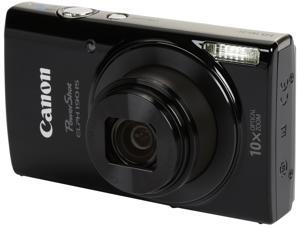Types of
Cameras for Photography
- Compact Digital Camera(Point and shoot)
- Bridge cameras (Super Zoom Camera)
- Digital SLR Cameras
- Mirrorless Cameras
- Action Cameras
Compact
Digital Camera:
Point and shoot
cameras are very famous and user friendly digital camera. It allows anyone to
capture beautiful pictures/photos by simply pointing the camera at subject and
click the shutter button. Due to compact size we can carry very easy when
you're going for holidays and trips.
Pros:
- Very user-friendly
- Light and compact
- Expandable memory
- No need invest on lens's
- Full auto mode
- Less expensive
Cons:
- No manual operations
- Limited zoom range
- Lower resolution
- Delay in focus
Bridge
Cameras:
Bridge cameras are
cameras that fill the niche between the DSLR and the point-and-shoot camera.
They are also called as superzoom cameras.
The term "bridge camera" was originally used to refer to film
cameras which "bridged the gap" between point-and-shoot cameras and
SLRs.
Pros:
- No need invest on lens's
- Very user-friendly
- Light and compact
- Full auto mode
- Cheaper then DSLR's
- We can shoot in RAW
Cons:
- Usually can’t customize shutter speed and aperture
- Limited aperture and fixed zoom range
- Lower resolution due to small sensor
- Slower focus
Digital SLR Cameras
DSLR
(or digital single lens reflex) cameras take photos to the next level of image
quality. This more “serious” type of camera is best known for delivering
remarkably sharp and spectacular images, with beautiful background bokeh, and
even high resolution videos with the help of their advanced sensors, manual
settings, and wide range of interchangeable lenses.
While
they are considered high-end, there are more affordable entry-level DSLRs for
beginners. They are suitable for almost every kind of photography out there, so
literally anyone—from hobbyists to event and sports photographers—can opt for
this type of camera.
- Camera lens
- Reflex mirror
- Focal-plane shutter
- Image sensor
- Matte focusing screen
- Condenser lens
- Pentaprism/pentamirror
- Viewfinder eyepiece
DSLR
of two types: full-frame and crop sensor
Pros:
- Fully customizable settings
- Large sensors for cleaner images
- Optical viewfinder
- High-resolution photo output
- Full HD to UHD video output
- Wide variety of camera body and lens choices
Cons:
- Bigger and bulkier
- Higher cost
- Requires ample know-how
Mirrorless cameras
This are the latest in professional cameras—they are
basically more compact DSLRs without the internal mirror that reflects light
onto the sensor.
What’s interesting about mirrorless cameras is that
they are now capable of capturing incredible, high-resolution images with even
faster shutter speeds and record ultra HD videos that only the most expensive,
higher-end DSLRs can produce.
The main reason why many still prefer DSLRs, however,
is that they have access to a bigger collection of lenses. However, mirrorless
cameras are great investments considering their growing collection of lenses.
Overall, it’s a combination of two popular types of
digital cameras—a point-and-shoot for its compact size and somewhat simpler
controls, and a DSLR for its interchangeable lenses and impressive output.
Similar to the DSLR,
mirrorless cameras also come in two types: full-frame and crop sensor
The Very First
Mirrorless Camera Was a Gem Made by Epson in 2010.
Pros:
- Electronic viewfinder
- Smaller and lighter
- Simpler operation and controls
- Faster and better for video
- Higher video quality even in lower-end models
- Shoots more images at faster shutter speeds
Cons:
- Shorter battery life
- Slower autofocus
- Fewer lenses and accessories
Action Cameras
We’ve definitely
seen the rising popularity of action cameras in the past few years, and it’s
not hard to see why. Common action cameras like the GoPro can fit in the palm
of your hand, but they’re some of the most durable and versatile types of
digital cameras that offer very high-resolution output.
If you’re the adventurous or sporty type and simply
want to take breathtaking photos and videos that will “take you back” to those
moments, action cameras are for you.
Pros:
- Rugged and compact
- Lightweight
- Versatile and mountable on almost any surface
- Remote view and shutter via smartphone
Cons:
- Viewfinder too small, if available
- Exposure settings not fully customizable
- Fixed focus
- Limited digital zoom






No comments:
Post a Comment